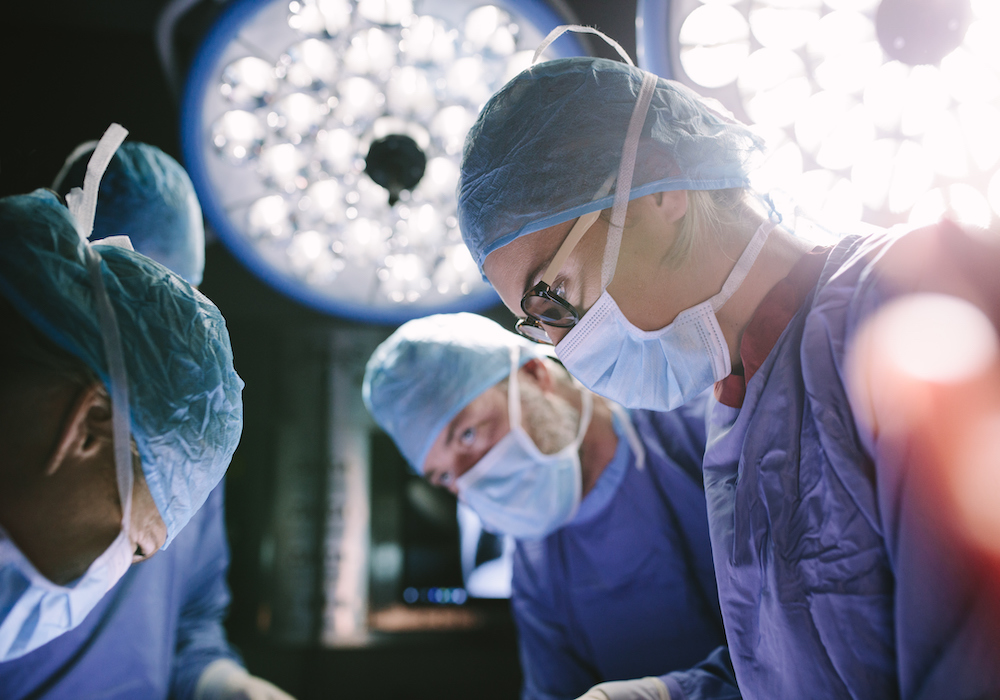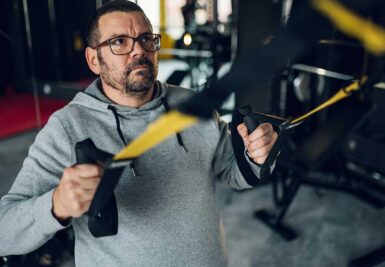THIS IS PART OF THE ULTIMATE GUIDE TO SCOLIOSIS
Spinal fusion surgery for scoliosis is a procedure done to correct the spinal curve deformity, eliminate or prevent spine instability and further progression of the condition.
A spine surgeon performs this type of surgery by fusing together two or more vertebrae, getting them to heal into one solid bone. This eliminates the motion between individual vertebrae.
Read on to learn more about when spinal fusion surgery for scoliosis is typically performed and what you need to know about the recovery process.
Spine anatomy
To understand what happens in spinal fusion surgery for scoliosis, it’s helpful to first understand the various components of the spine.
The spine is made up of 24 bones, called vertebrae, which are stacked on top of one another. The seven small vertebrae that begin at the base of the skull and form the neck comprise the cervical spine. There are twelve vertebrae below this that have ribs attached, which are thoracic vertebrae. Below this are five vertebrae of the lumbar spine the low back.
The vertebrae are separated by intervertebral discs. The discs are flexible, flat and round discs and are about a half-inch thick and function to allow motion between the vertebrae and act as shock absorbers.
Each of the vertebrae has a hole or passage that allows the spinal cord to travel up and down through the spine, called the spinal canal. In between each vertebra, the spinal cord branches off nerve roots to either side which then go to the rest of the body. These nerves carry information and controls in between the body and the brain.
Why would someone need spinal fusion surgery for scoliosis?
Spinal fusion surgery is not necessary for most people with back pain. In fact, most spine surgeons try to find alternative treatments other than fusion. Many advances in modern spine treatment options allow spine specialists to help patients live normal lives without having an operation.
However, these fusion surgeries remain an effective treatment in some of the most serious spine pain cases, including:
Instability from spine fractures and similar conditions
In cases in which the spine loses its structural integrity, spinal fusion surgery is necessary to restore stability. An extreme example of this is a severe spine fracture. A more common condition that causes this called spondylolisthesis, which is when one vertebra slips forward relative to another.
Instability from pressure on nerves or the spinal cord
In this scenario, important parts of the vertebrae sometimes need to be removed in order to remove pressure on nerves or the spinal cord. After removing these structures and taking pressure off the nerves, the vertebrae would be unstable, so spinal fusion surgery is performed.
Spine deformities
In cases of scoliosis or kyphosis, the alignment of the spine becomes a problem. If scoliosis back surgery is required for spine deformities, the alignment is improved during surgery and the individual vertebrae are then fused together in that improved alignment.

How is spinal fusion performed?
Once you and your physician decide on spinal fusion surgery, there are general steps taken during the procedure. Surgeries will vary, depending on the location and severity of your injury.
Before your procedure begins, you will be placed under general anesthesia.
Once the anesthesia takes effect and you are positioned on the operating table, your surgeon will make an incision. Depending on which vertebrae need to be fused, your surgeon’s approach will vary. They will either make a posterior incision (back) in your neck or back directly above your spine, a lateral incision (side) on either side of your spine, or an anterior incision (front) in your abdomen to access your spine.
A bone graft is taken either from your own body, a bone bank or a synthetic bone is used to put in between the damaged vertebrae. If it’s taken from your body, it’s usually from your pelvis. Your surgeon will make a small incision above your pelvis and take a small portion of it to use for the fusion. The bone graft material allows and even promotes the bone cells to heal together between the vertebrae. This process is identical to what happens when a fracture heals.
Finally, metal plates, screws and/or rods may be used to help hold the vertebrae together while the bone graft heals. This process is called internal fixation. Initially, after your procedure, this metal fixation provides nearly all the structural support between the vertebrae. Over time as the fusion occurs, the bone itself takes over the load.
Do I need spinal fusion surgery for scoliosis?
To determine whether you are experiencing problems that may require surgery, your physician will ask you for a complete medical history, have you describe your symptoms, conduct a physical examination and review imaging studies.
While an X-ray, CT scan, and/or MRI can help, it’s the combination of your pain pattern, physical examination and imaging studies that help narrow down the problem.
Ultimately, determining the correct diagnosis is the most critical step in helping patients find the best possible treatment course.
Make an appointment with a spine specialist
What treatments can be attempted prior to considering surgery?
Except in emergency situations, conservative medical treatments are always attempted prior to considering spinal fusion surgery for scoliosis.
Having an operation is only considered when a combination of such nonoperative treatments has been attempted and the symptoms remain bothersome.
What are the possible risks of spinal fusion?
With every surgery, there is a risk of complications. Spinal fusion surgery for scoliosis is a safe procedure, but difficulties may still occur.
Some risks associated with this procedure may include:
- Pain
- Bleeding or blood loss
- Infection
- Nerve or spinal cord injury
- Implant complications
- Nonunion (When a nonunion occurs because the vertebrae fail to grow together and the fusion fails, this can cause pain to recur, and the implants may loosen or even break)
- Medical complications (heart attack, blood clots, stroke, etc.)
Learn more about OrthoIndy spine treatments
How long does it take after surgery before you can bend over?
After spinal fusion surgery for scoliosis, you should not bend or twist your spine for at least six weeks, or until the fusion heals. If you bend or twist too early, you can damage your spinal fusion.
Spinal fusion can take as long as three months to heal. Exercise will promote healing in your back and you will likely be encouraged by your physician to begin light physical therapy anywhere between six weeks and three months after surgery.
Initially, this surgery may prevent you from bending over and decrease flexibility in your back because two of your bones are forming into one. Your muscles weaken because of the surgery, causing you to muscle tone and range of motion. This induces stiffness but is ultimately designed to decrease your back pain.
What is the recovery process for spinal fusion?
Recovery is an important factor in this process. If you do not take the proper time to recover from your spinal fusion surgery, additional strain on your other vertebrae can cause the rest of your back to suffer.
Listen to your body and your physician’s instructions to experience success in your recovery.
Depending on the extent of the problem and surgery, you may be in the hospital after surgery anywhere from a few hours to a few days. The amount of pain after the procedure is very subjective and depends on both the surgery itself and the patient.
Modern minimally invasive techniques are used whenever possible to minimize disruption of normal tissues and reduce postoperative pain.
Recovering after spinal fusion
Pain control medications may be necessary after surgery and may include muscle relaxer medications.
It is important after spinal fusion surgery to avoid too much bending or twisting of either the neck or back (depending on the area you had surgery). Your doctor may suggest using a brace to keep your spine well-aligned.
Physical therapy after spinal fusion will help you properly sit, move, stand and walk after your fusion. Full recovery usually takes between three and six months.
The recovery time takes anywhere from a few days to a few months, depending on the extent of the surgery. As a result, returning to work after a spinal fusion can vary.
The fusion process can take anywhere from three to 18 months, with six to 12 months being the typical timeframe. Radiographs or X-rays are generally taken after surgery to make sure this process is occurring without complications.

Get the Ultimate Guide to Scoliosis Treatment
Whether you’re just beginning to research scoliosis or have already made the decision to have scoliosis back surgery, our comprehensive guide gives you answers to common questions about scoliosis and examples of real patient success stories.





